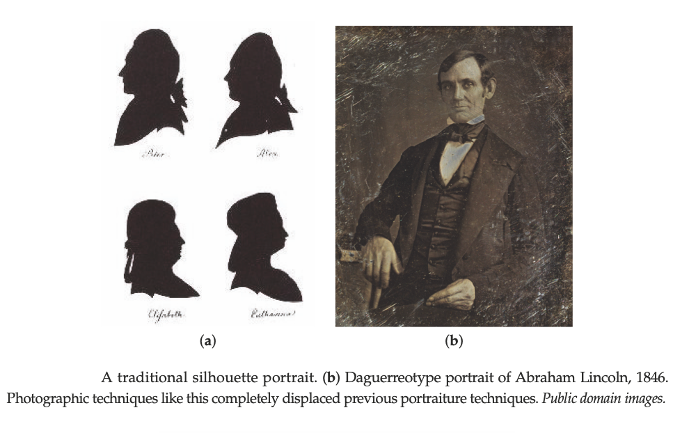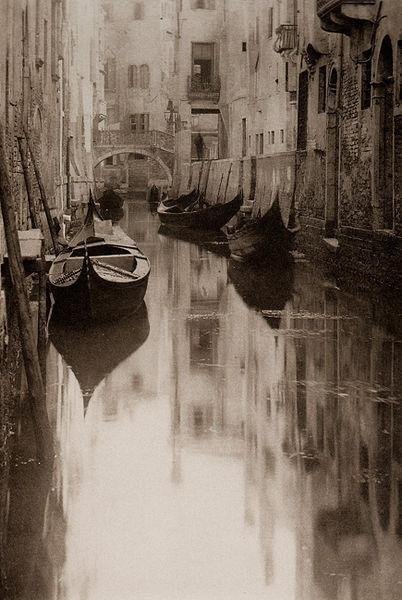History of AI - The invention of photography
“From today, painting is dead!”
—Paul Delaroche, painter, at a demonstration of the daguerreotype in 1839.
Technology has significantly increased artistic and professional opportunities throughout history by offering artists more advanced tools. It revitalizes art forms that may have become stagnant. While introducing new technologies can initially cause concern and fear among traditional artists about being replaced, it ultimately leads to the developing of new artistic styles. Additionally, these technological advancements make art more accessible to a larger segment of society, both as creators and consumers. This trend has been especially evident in the past two centuries, starting with the Industrial Revolution.
This narrative draws parallels between photography's history and AI's current status as an artistic tool. In the beginning, photography was not viewed as a legitimate form of art, similar to how some still consider AI non-artistic because of its mechanical nature. While some artists embraced photography, others saw it as a threat to traditional art forms. The introduction of photography displaced older technologies, such as portraiture, which were no longer viewed as art. However, as photography developed and became more widespread, artists learned to master it and express themselves using this new medium. The controversy surrounding photography eventually dissipated as it became a widely accepted art form accessible to non-experts and hobbyists.
Moreover, photography revolutionized the art form, leading it towards greater abstraction. I predict that AI as an artistic tool will follow a similar trajectory, with new AI tools eventually being fully recognized as artists’ tools. AI tools may stimulate traditional media, similar to how photography breathed new life into the old art form.
The invention of photography is credited to Frenchman Louis Daguerre and Englishman William Henry Fox Talbot, who independently developed their own photographic processes in the mid-19th century. Daguerre's process, known as the daguerreotype, involved exposing a copper plate coated with silver iodide to light and then treating it with mercury vapor to create a permanent image. Talbot's process, known as the calotype, involved coating a paper negative with silver chloride and then developing a positive image from the negative. Photography changed the way people saw and recorded the world around them. Prior to photography, the only way to record an image was through painting or drawing, which were time-consuming and often required significant artistic skill. With the invention of photography, images could be captured quickly and accurately, allowing people to document events, people, and places with unprecedented detail.
Photography quickly became a popular medium for artistic expression, with photographers experimenting with different techniques and styles to capture the world in unique and compelling ways. Some early photographers, such as Julia Margaret Cameron and Henri Cartier-Bresson, used photography to create beautiful and evocative portraits, while others, such as Ansel Adams, used photography to capture the natural beauty of the world around them.
Back in time, the question of whether photography can be considered art has been a subject of debate for several decades, resulting in three central positions. Some argued that photography could not be regarded as art because it was created by a mechanical device rather than human creativity. Many artists were dismissive of photography and considered it a threat to "real art." For instance, the poet Charles Baudelaire stated in a review of the Salon of 1859, "If photography is allowed to supplement art in some of its functions, it will soon supplant or corrupt it all together, thanks to the stupidity of the multitude which is its natural ally." The second perspective was that photography could be helpful to artists, such as for reference, but should not be seen as equal to drawing and painting. The third group compared photography to established art forms like etching and lithography and believed that photography could eventually be as significant as painting.
By 1863, a painter-photographer named Henri Le Secq claimed, "One knows that photography has harmed painting considerably, and has killed portraiture especially, once the livelihood of the artist." Photography replaced most older forms of portraiture, such as the silhouette, and no one particularly regretted this loss. These debates illustrate how new technologies, like AI as an artistic tool, can disrupt traditional art forms and provoke discussions about their legitimacy and significance.
As history shows, the invention of photography had an unexpected impact on painting, forcing artists to question their role in creating realistic depictions of the world. With the widespread availability of cameras, photorealistic images became common, causing painters to explore new forms of abstraction. The Tonalist movement sought to create atmospheric scenes, while the Impressionists were likely influenced by the "imperfections" of early photographs. Symbolists and post-Impressionists moved away from perceptual realism altogether. Photography continued to influence modern art, with multiple-exposure photography influencing Futurism and Cubism. It's possible that photography was a major catalyst for the Modern Art movement, inspiring artists and pushing them beyond realism.
The Pictorialist movement, which emerged in 1885, aimed to establish photography as a recognized art form revolutionized photography by emphasizing the aesthetic qualities of beauty, tonality, and composition over creating a factual representation. They sought to elevate photography to the same level as painting, and to gain recognition for it as an art form in galleries and other artistic institutions. In its early years, photography was primarily used for scientific and documentary purposes. Still, this perception shifted in the 1850s when figures like the English painter William Newton advocated for photography's artistic potential.
Their efforts helped acknowledge photography's artistic potential, culminating in the “Buffalo Show” organized by Alfred Stieglitz at the Albright Gallery in Buffalo, NY, which was the first photography exhibition at an American art museum in 1910. Photography was then firmly established as an art form and was free to move beyond the constraints of Pictorialism.
To avoid making hasty generalizations about the relationship between computer tools and art, this article aims to highlight a few historical references, exploring the emergence of photography first; and, in the next chapter, delving into film and computer animation.
Today, photography continues to be a popular and important medium for artistic expression, with digital technology making it easier than ever for anyone to capture and share images. With advances in technology, such as high-resolution sensors, image stabilization, and editing software, photographers can now create images that are more detailed, dynamic, and visually stunning than ever before. Whether used for artistic expression or practical purposes, photography remains a powerful tool for capturing and communicating the beauty and complexity of the world around us.
These cases illustrate how, despite initial concerns that new technology might replace artists, it often presents them with new possibilities and roles. Additionally, I will examine how automation is utilized in procedural and computer art in the next chapter. While outsiders may perceive the computer or technology as the primary creative force, the reality is that humans are the author of the work in each field. The artistic human value remains unquestionable, and human input is most essential.



